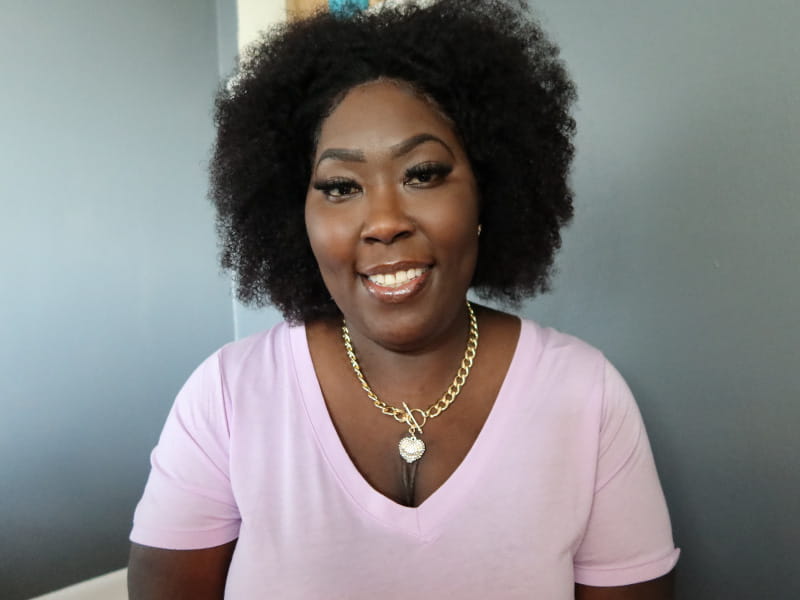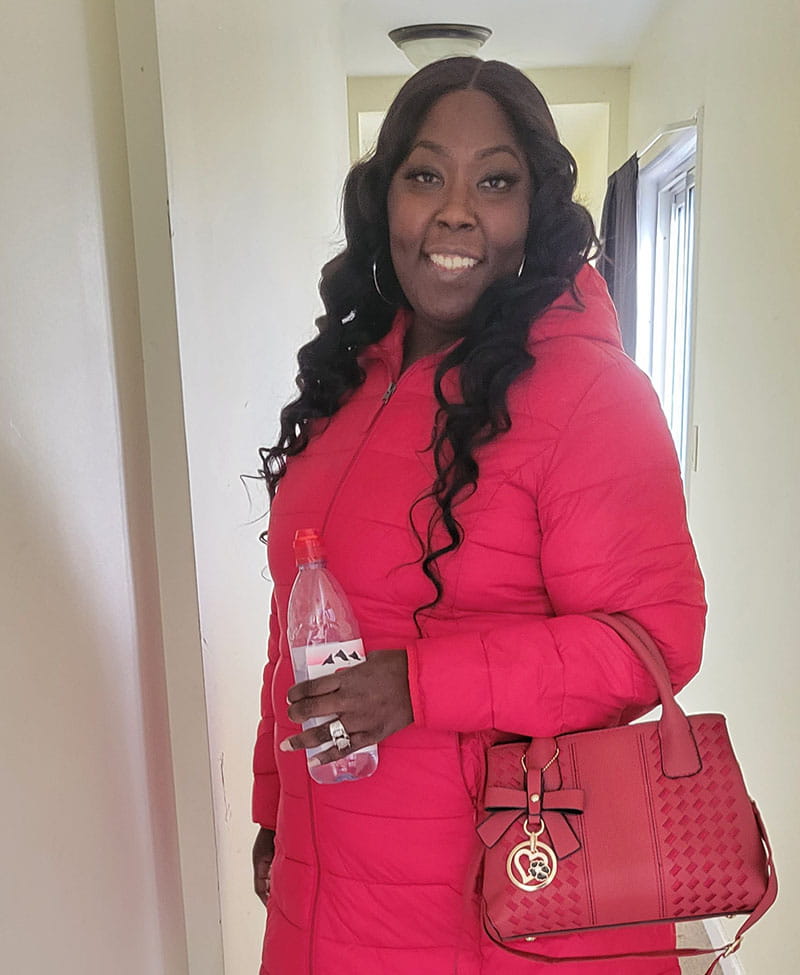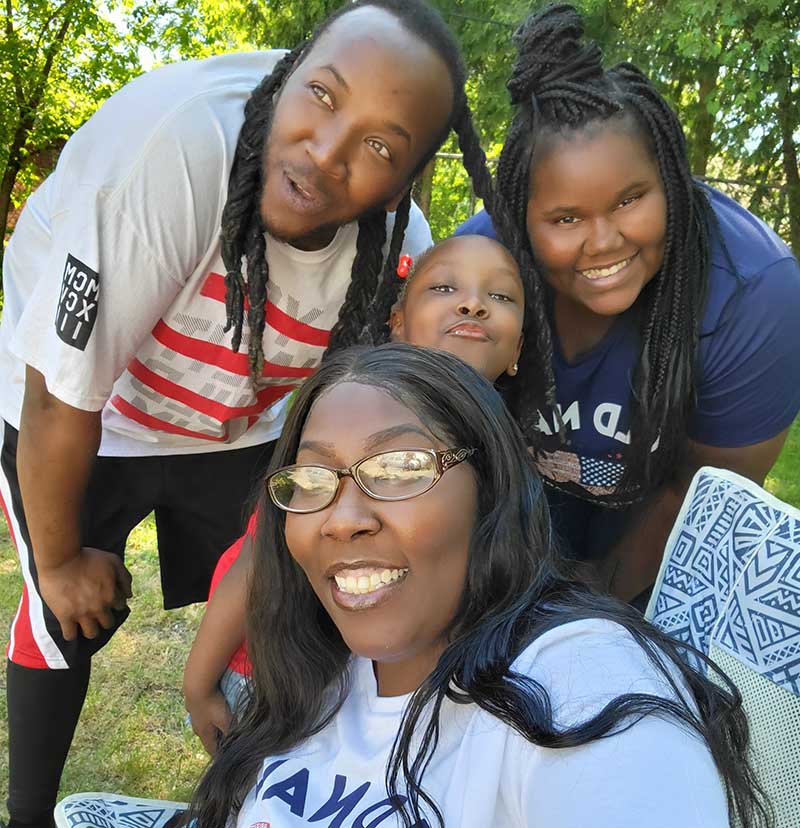Post-pregnancy breathlessness, fatigue were symptoms of heart failure
By Suzanne Marta, American Heart Association News

Tiara Johnson's second pregnancy went smoothly – until the last month.
"My fingers were so puffy, I couldn't wear my wedding ring," she said.
The problem stemmed from her blood pressure. And the rising blood pressure stemmed from preeclampsia, a complication of pregnancy that usually manifests in the later months.
Tiara, who lives in Fraser, Michigan, was given medication to control her blood pressure. It didn't work, so a few days later, she was sent to the hospital to have labor induced.
After delivering her second daughter, Azuri, Tiara's blood pressure remained elevated. When she went home a few days later, she couldn't get comfortable.
"I just didn't feel right," Tiara said. "Sitting down or lying down, nothing made it better."
She returned to the hospital. She was treated for fluid retention and sent home again. She continued to feel tired but attributed it to recovery from childbirth and life with a newborn.
Two months later, Tiara passed out in the parking lot at work. Taken by ambulance to a different hospital, she received a different diagnosis: Peripartum cardiomyopathy, an uncommon form of heart failure that happens during the last month of pregnancy or within the first five months after giving birth. A physician said her heart was working at 10% of its normal function.
"I was confused and distraught," she said. "When you think of heart failure, you don't think of someone who is 26."
Over the next three and a half years, Tiara was constantly in and out of the hospital as doctors worked to ease the strain on her heart. Then, in August 2018, doctors wanted to implant a left ventricular assist device, a machine that essentially does the work for the left side of the heart. An LVAD is often used before a patient goes on the heart transplant waiting list.
However, there was another obstacle. Tiara needed to lose weight to become eligible for the list.
Working with a nutritionist, she learned to cut out fried and fast foods. She ate more meals at home, many of those including more vegetables than before. She also dabbled in intermittent fasting. Meanwhile, she began the process of getting an LVAD. She received it in March 2019 and continued her weight loss journey.
By April 2021, she'd lost 110 pounds. She'd reached the acceptable range to receive a heart transplant, so the process of getting on the list began.
She received a spot on Oct. 14. Two weeks later, she was hospitalized because of a severe leak of her aortic valve. Doctors feared she would soon need open-heart surgery. Instead, on Nov. 5, she was moved closer to the top of the transplant list. She also was sent home.
The next day, Tiara was waiting in the car while her husband, Gvon, went into a store to get cold medicine for their older daughter when her phone rang. Caller ID showed it was the University of Michigan hospital in Ann Arbor. Within an hour she was on her way to the hospital.
"I couldn't believe it was happening," she said. "This is what I had worked hard for all this time and now I was going to get a new heart. Even when I got to the hospital, it was hard to process."
Several days after the transplant, Tiara was walking laps around the unit. She even tidied her hospital room.

"Once I got up, it was like, 'It's on. I'm not going to be lying in this bed being miserable,'" she said.
Next came learning to get used to having a heart that worked properly.
"When I first started walking, I thought, 'Tiara, you better slow down or your heart is going to race.' But the monitor was normal. I was just normal," she said.
Tiara went home on Thanksgiving. But the celebration fizzled quickly. Azuri, now 6 and visiting Tiara's godmother, had a high fever and was struggling to breathe. She tested positive for COVID-19 and was admitted to the hospital with pneumonia.
Azuri was hospitalized for five days, then quarantined in her room at home another two and a half weeks as a precaution because of Tiara's compromised immune system. Tiara then got the flu, sending her to bed for two weeks. Once healthy, she returned to cardiac rehab.
Tiara still finds herself automatically reaching for her LVAD to find it isn't there. "I have to remind myself I'm free, I don't need that anymore."
"Just to see her smile is everything," Gvon said.

Now 32, Tiara continues to focus on her recovery and her future. She's taking classes to finish her associate degree in social work this spring before pursuing a bachelor's degree.
"I feel amazing now," she said. "I know I can do it."
Stories From the Heart chronicles the inspiring journeys of heart disease and stroke survivors, caregivers and advocates.
If you have questions or comments about this story, please email [email protected].





